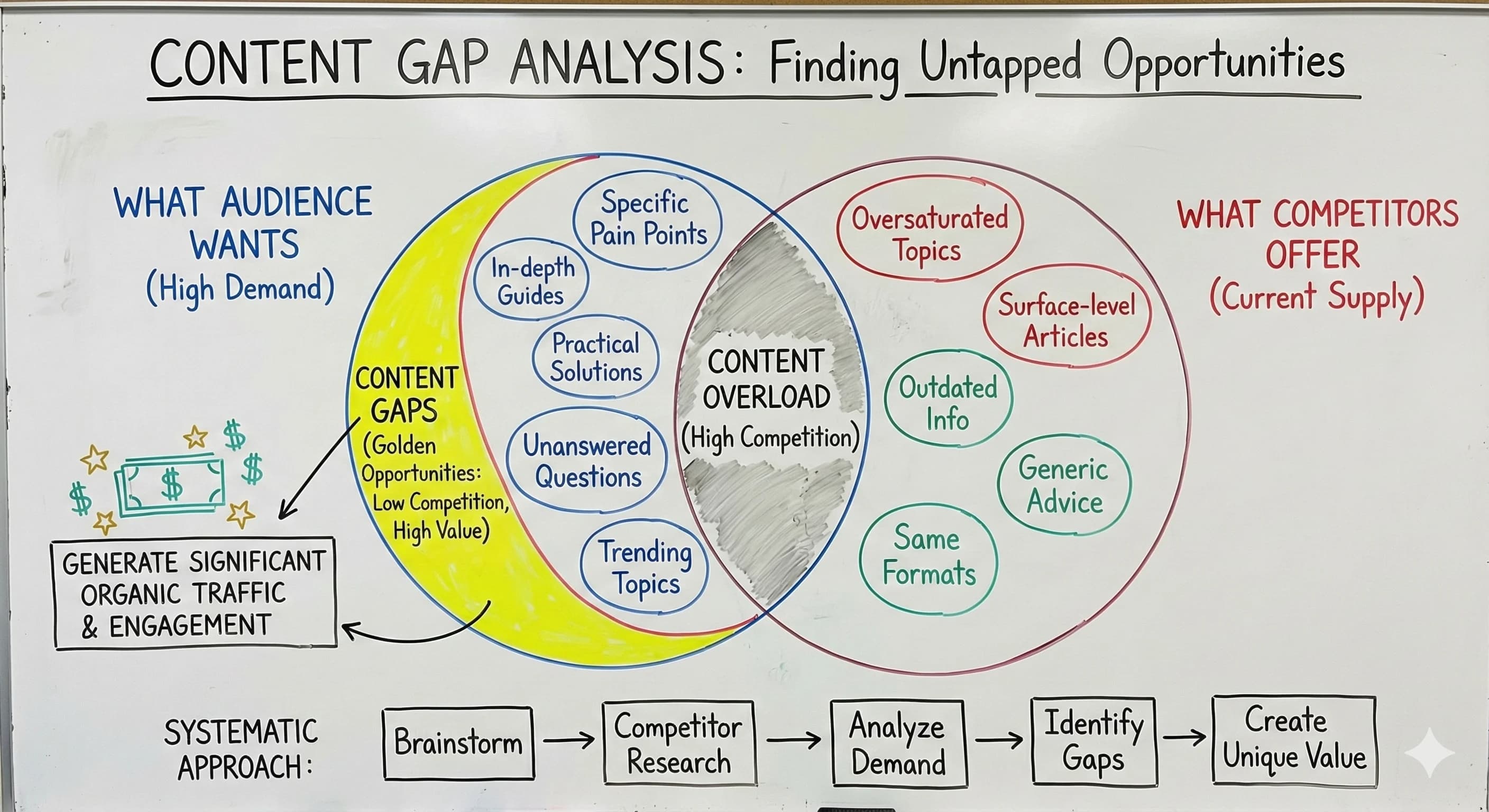How Content Gap Analysis Transformed My Content Marketing Strategy: A Step-by-Step Guide for Content Creators
Master content gap analysis to discover untapped opportunities. Learn how content creators use strategic research to find high-demand, low-competition topics.
•6 min read
Details

Loading content...

